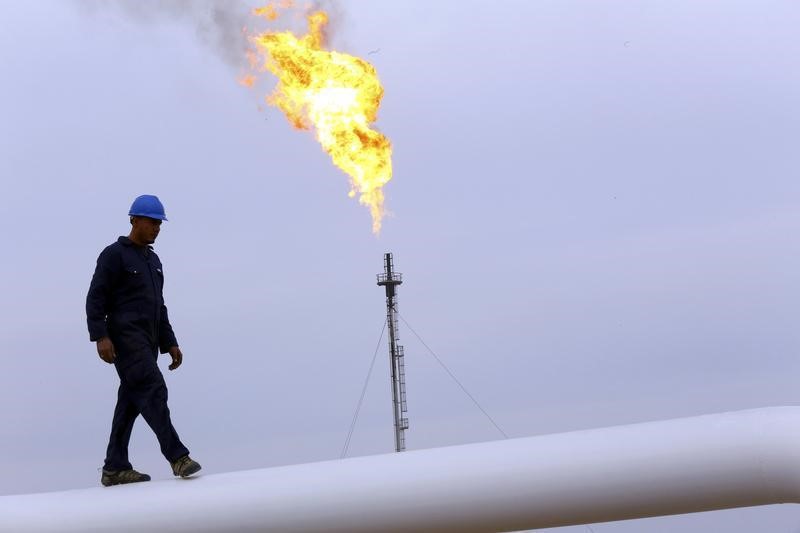By Barani Krishnan
Investing.com - It must feel pretty lonely to be an oil bear these days.
Even data suggesting Russia wasn't slashing production as much as its OPEC ally Saudi Arabia would like went largely ignored on Tuesday as crude futures hit highs of about $20 a barrel more from Christmas Eve lows.
U.S. West Texas Intermediate crude settled up 99 cents, or 1.6%, at $62.58 per barrel. It hit a near-five-month high of $62.75 earlier compared to last year's low of $42.36 on Dec. 24.
So far in 2019, the U.S. crude benchmark has gained 37%, achieving 33% of that in the first quarter ended Friday. The last time WTI gained more for a quarter was during the second quarter of 2009, when it rose about 40%.
U.K. Brent crude, the global oil benchmark, was up 46 cents, or 0.7%, at $69.47 per barrel by 3:17 PM ET (19:17 GMT). It was up 29% for the year, with market bulls looking determined to take out the $70 target aspired to by the Saudis.
The gains came despite Tuesday’s news that Russia fell short of its oil-output cut target for last month.
Russian Energy Minister Alexander Novak had previously said April would be the first month that Moscow achieved full compliance with the output deal. Under its OPEC+ pact with Saudi Arabia, Russia secured an effective exemption on cuts through the winter, a time when field maintenance poses particularly big challenges.
Hedge funds and speculators placed their chips instead on a Reuters survey from Monday that showed OPEC's crude output fell nearly 300,000 barrels a day in March to a four-year low. Saudi Arabia led the charge by cutting more production than promised, while power outages in Venezuela restricted the loading of export shipments.
Other data on Tuesday showed U.S. durable-goods orders fell 1.6% last month, more than the 1.1% decline expected by economists surveyed by Investing.com. While the break from a three-month stretch of gains in the data intensified worries of a slowdown, better-than-expected manufacturing stats in the U.S. and China helped traders stay on their course to push oil prices higher.
Oil bears have been overwhelmed lately by a cocktail of bullish signals that include relentless OPEC production cuts, rigid Trump administration sanctions on Venezuelan and Iranian oil and a virtually easy money regime in the U.S. assured by a Federal Reserve determined not to hike interest rates like before.
After nearly five years of filling short-sellers' pockets, U.S. crude drillers have also woken up, refusing to overproduce like they used to.
The U.S. oil rig count has been falling week after week and production estimates by researchers in the government to Wall Street and the media show that new record highs in output may not be achieved as easily as before.
Add to that the notion of a better-than-expected recovery in China’s economy and oil demand this year and the result has been a perfect storm for those caught on the short side of the market.
Traders and investors will also be on the lookout on Tuesday for a snapshot from the American Petroleum Institute on what U.S. oil-supply demand could have been last week.
The API is due to release at 4:30 PM ET a report on crude oil inventories and stockpiles of other energy liquids for the week ended March 29.
That report will be ahead of official data on Wednesday from the U.S. Energy Information Administration, which traders expect to cite a crude stockpile drawdown of 700,000 barrels for last week. In the previous week ended March 22, U.S. crude stocks rose by an unexpected 2.8 million barrels.
